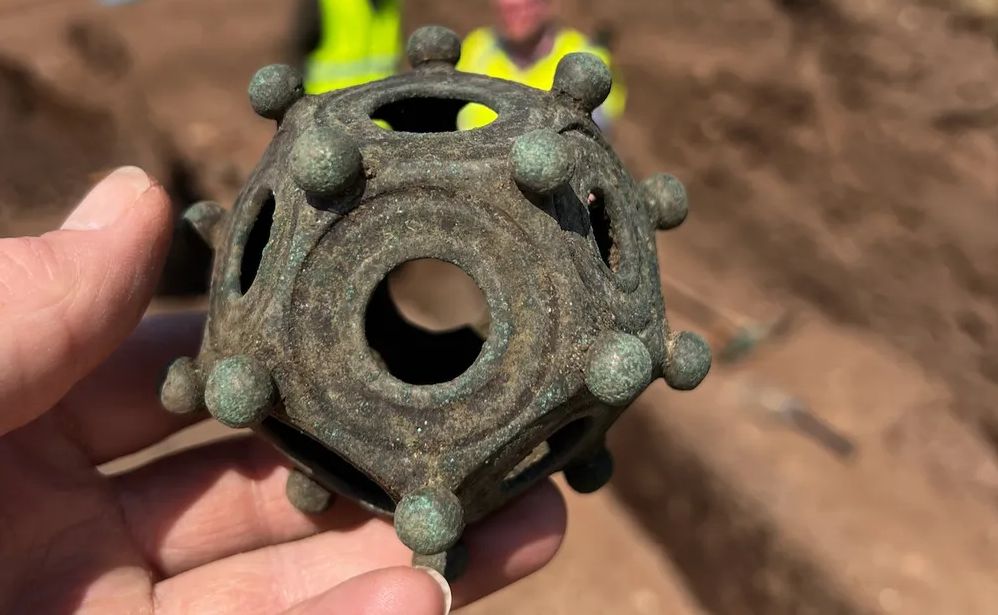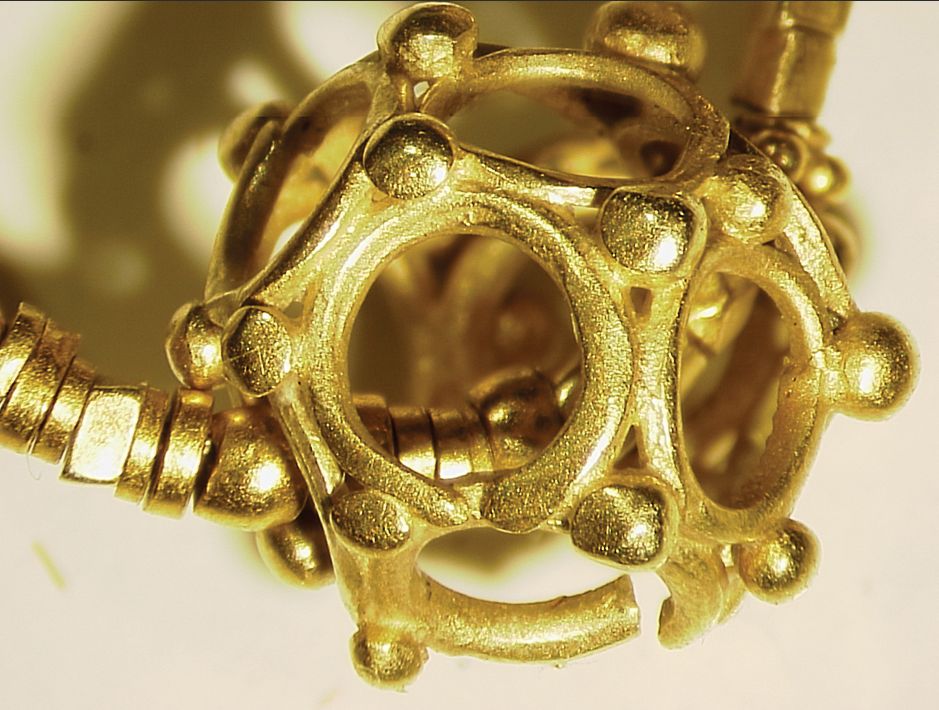Roman Dodecahedrons: A Mystifying Archaeological Find [Hackaday]

Much about archaeology can be described as trying to figure out the context in which objects and constructions should be interpreted. A good example of this are the metal dodecahedrons (twelve-sided shape) which have been found during archaeological excavations at former Roman sites. Since 1739 over 115 of them have been recorded, most recently a fully intact copper specimen found near the Lincolnshire village of Norton Disney during the Summer of 2023 by a local group of archaeologists.

As the Norton Disney History and Archaeology Group notes on their page, this is the 33rd example of one of these items found in what was once Roman Britain, lending credence to the idea that such dodecahedrons originated within the Gallo-Roman culture.
As for the objects themselves, the ones so far found were dated to between the 2nd and 4th century CE, are all made out of some kind of metal alloy (e.g. bronze), are usually a dodecahedron but sometimes different (e.g. an icosahedron with 20 faces), yet all are hollow and usually with a single large hole in each face. The dodecahedron found at Norton Disney was analyzed to consist out of 75% copper, 7% tin and 18% lead, with a width of 8.6 cm and weighing in at 254 grams.
What is perhaps most interesting about these objects is that they can be found all across the former Roman Empire, as well as the Maritime Silk Road with similar examples found in what today is Óc Eo in Vietnam, but which used to be part of the Kingdom of Funan, as well as in Myanmar (formerly Burma). These finds generally are in the form of smaller, golden polyhedrons, albeit possessing a strong resemblance to the versions found throughout the former Roman Empire. A great overview of these Asian versions is provided by Anna T. N. Bennett in a 2009 article in Archeo Sciences.

As for the purpose of those objects, it is clear that at least the golden type was intended as decorative jewelry, possibly with some religious overtones. The ones made out of bronze and similar materials are more of a mystery, with a variety of uses suggested over the years, including as a spool knitting device, as well as a mathematical or a surveying instrument, yet none of the available sources from the era ever reference these objects, making that highly unlikely.
Ultimately it is highly likely that these objects were made and coveted primarily because people liked how they looked, which isn’t too dissimilar from how humans today pick and choose baubles to keep around, whether on shelves or as part of personal jewelry.
Some of us also like to build LED-covered dodecahedrons for fun, which is something that will have archaeologists in a few hundred years from now likely very puzzled. You can also assemble your own Gallo-Roman-style dodecahedron if you really want to throw said archaeologists for a loop.

![roman-dodecahedrons:-a-mystifying-archaeological-find-[hackaday]](https://i0.wp.com/upmytech.com/wp-content/uploads/2024/01/165191-roman-dodecahedrons-a-mystifying-archaeological-find-hackaday.jpg?resize=800%2C445&ssl=1)